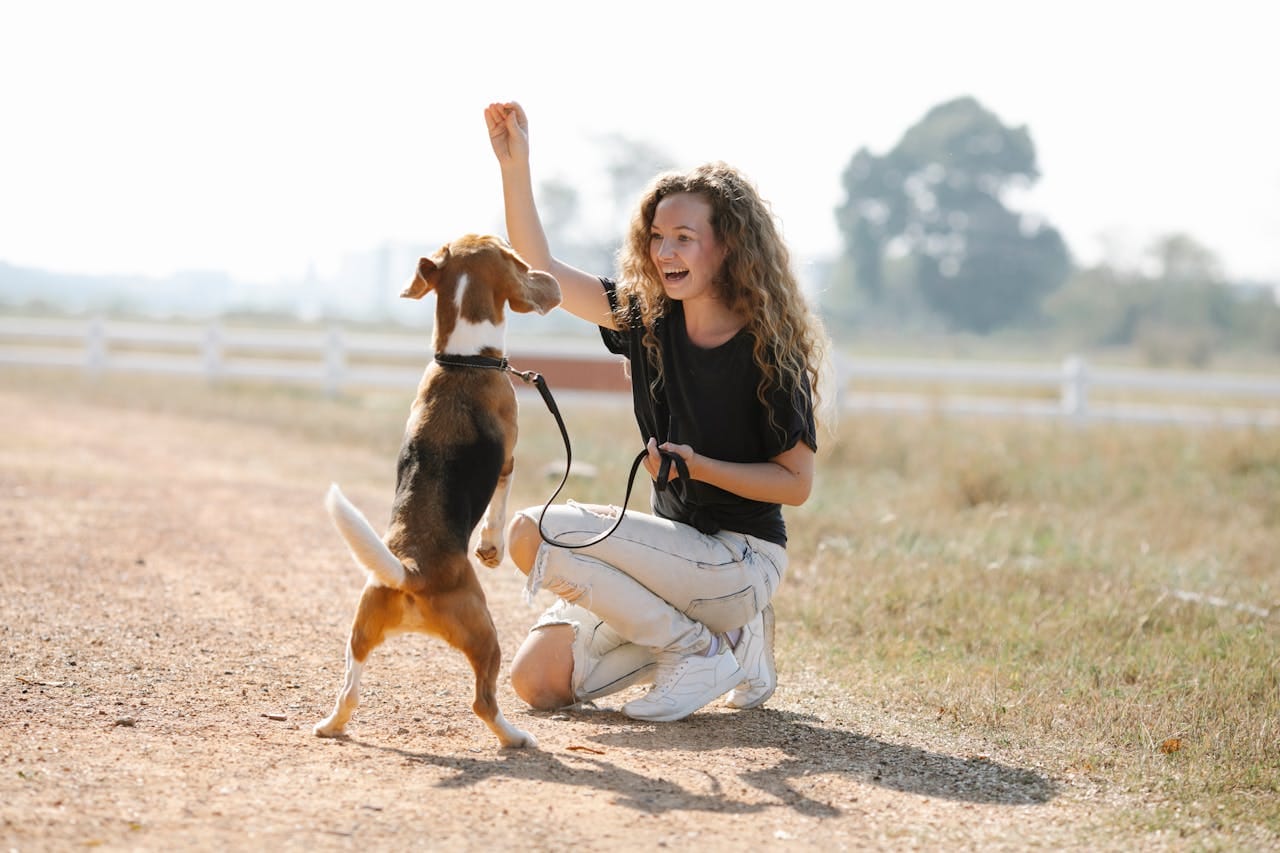Training your dog is an essential part of ensuring a happy and harmonious relationship between you and your furry friend. Effective dog training not only promotes good behavior but also strengthens the bond you share. By using positive reinforcement, consistency, and patience, you can train your dog to follow commands, reduce unwanted behaviors, and become a well-mannered companion.
Why Training Is Important
Dog training is about more than teaching commands; it’s about communication and trust. Proper training can:
- Prevent behavioral issues like excessive barking, chewing, or aggression.
- Ensure your dog’s safety in various situations, such as around traffic or unfamiliar environments.
- Help your dog become more confident and comfortable in their surroundings.
According to the American Kennel Club (AKC), training also improves mental stimulation, which is vital for a dog’s overall health.
Key Tips for Training Your Dog
1. Start Early, But It’s Never Too Late
Puppies are easier to train because they are more adaptable, but older dogs can learn too. Begin with basic commands like “sit,” “stay,” and “come” to build a foundation. If you’re training an older dog, focus on patience and positive reinforcement to help them unlearn undesirable habits.
2. Use Positive Reinforcement
Reward-based training is one of the most effective techniques. Offer treats, praise, or playtime when your dog successfully follows a command or exhibits good behavior. Positive reinforcement encourages repetition of the desired behavior and creates a fun learning experience for your dog.
3. Keep Training Sessions Short and Consistent
Dogs have short attention spans, so keep sessions to 5-10 minutes, especially for young puppies. Practice commands several times a day, ensuring consistency in the tone of your voice, gestures, and rewards.
4. Avoid Punishment-Based Methods
Punishment or negative reinforcement can lead to fear and confusion in dogs, potentially damaging your relationship. Instead of scolding for mistakes, redirect your dog’s attention to the correct behavior and reward them for compliance.
Essential Commands to Teach Your Dog
Start with these basic commands to lay a strong training foundation:
- Sit: This command helps establish control and is the first step to more complex training.
- Stay: Essential for preventing accidents or keeping your dog calm in exciting situations.
- Come: Crucial for safety, especially when your dog is off-leash.
- Leave It: Teaches your dog to ignore tempting or dangerous items.
Each command should be practiced in different environments to help your dog generalize the behavior.
Common Training Challenges and How to Overcome Them
1. Distracted Dogs
Dogs can easily lose focus, especially in busy environments. Start training in a quiet space and gradually introduce distractions. Using high-value treats, like chicken or cheese, can help regain their attention.
2. Inconsistent Commands
Ensure everyone in the household uses the same commands and gestures to avoid confusion. For instance, don’t interchange “down” for lying down and “off” for getting off furniture.
3. Behavioral Issues
For persistent issues like aggression or separation anxiety, consider consulting a professional trainer or a veterinarian. According to the American Veterinary Medical Association (AVMA), addressing behavioral problems early can improve a dog’s quality of life and your relationship with them.
Tools to Aid Training
- Clickers: A clicker reinforces positive behaviors by marking the exact moment your dog does something correctly.
- Harnesses and Leashes: These tools give you control during leash training and prevent pulling.
- Puzzle Toys: Keep your dog mentally stimulated between training sessions.
Advanced Training Tips
- Socialization: Expose your dog to different people, animals, and environments from an early age to reduce fear and build confidence.
- Crate Training: Teach your dog to view their crate as a safe space. This helps with house training and reduces anxiety when you’re away.
- Practice Patience: Dogs learn at different rates, so stay calm and celebrate small victories.
When to Seek Professional Help
Some dogs may require additional help beyond basic training, especially those with behavioral issues or specific needs. Professional trainers can provide customized strategies to help your dog succeed. Always ensure the trainer uses humane, reward-based methods.
Conclusion
Training your dog is a rewarding journey that builds trust, enhances safety, and ensures a well-behaved companion. By starting early, using positive reinforcement, and staying consistent, you’ll set your dog up for success. Remember, every dog learns at their own pace, so celebrate progress and enjoy the process.

